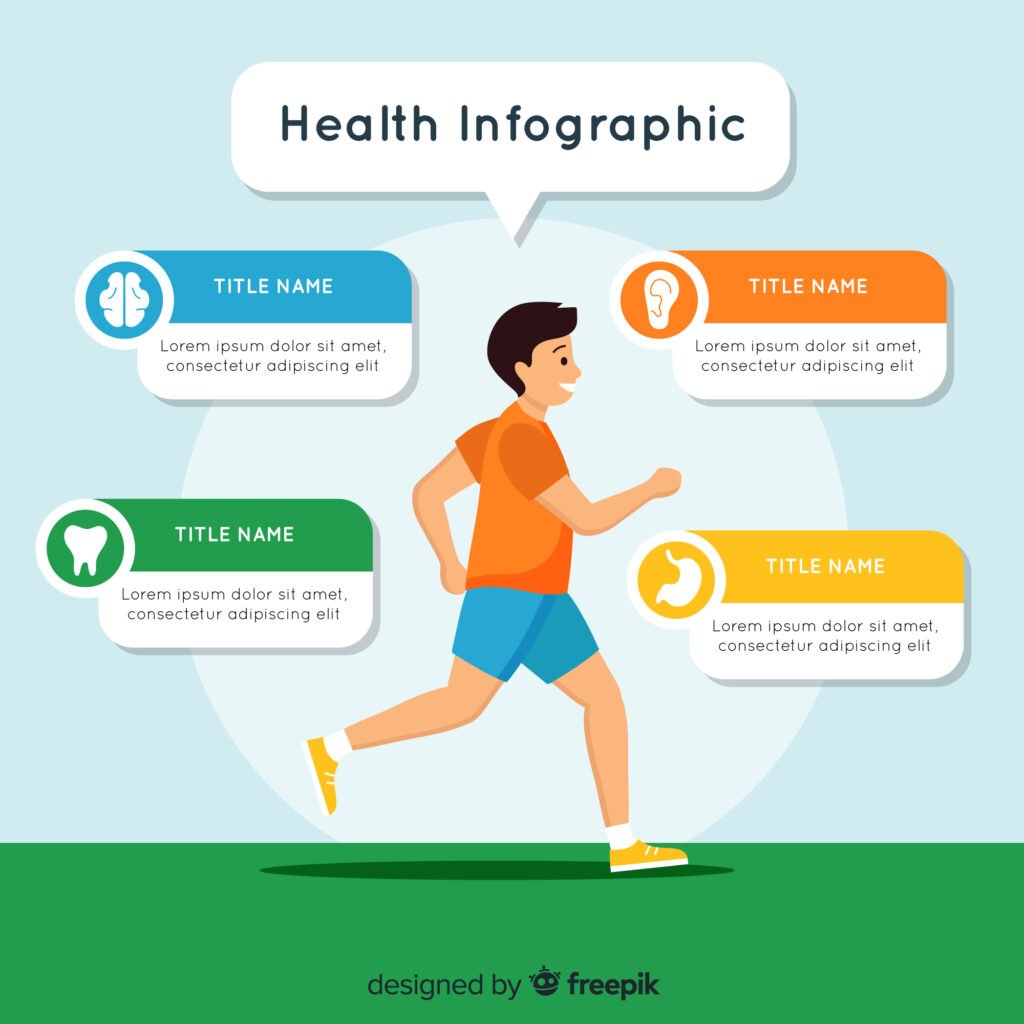Running: A Comprehensive Guide to Health, Fitness, and Performance
October 1, 2024 | by usmandar091@gmail.com

Running is one of the most popular and effective forms of exercise. It requires minimal equipment, can be done almost anywhere, and offers a wealth of physical and mental health benefits. Whether you are a beginner taking your first steps or a seasoned runner training for a marathon, running has something to offer everyone. This guide explores the benefits, techniques, training plans, and safety tips for runners of all levels.
Table of Contents
Benefits of Running

1. Physical Health
- Cardiovascular Fitness: Running strengthens the heart and improves circulation, reducing the risk of heart disease.
- Weight Management: As a high-calorie-burning activity, running aids in weight loss and maintenance.
- Muscle and Bone Strength: It enhances muscle tone, particularly in the legs, and improves bone density, reducing the risk of osteoporosis.
- Improved Lung Capacity: Running trains your respiratory system to work more efficiently.
2. Mental Health
- Stress Relief: Running releases endorphins, often referred to as “runner’s high,” which help alleviate stress and improve mood.
- Enhanced Focus and Creativity: Many runners report feeling mentally sharper and more creative after a run.
- Reduction in Anxiety and Depression: Regular running can reduce symptoms of anxiety and depression through its positive impact on brain chemistry.
3. Social and Lifestyle Benefits
- Community Building: Joining running clubs or participating in races fosters a sense of community and shared purpose.
- Time Efficiency: Running requires minimal time investment compared to other forms of exercise.
- Accessible and Affordable: All you need is a good pair of running shoes and a safe route.
Getting Started: The Basics of Running
1. Choose the Right Gear
- Running Shoes: Invest in shoes that provide proper support and cushioning for your foot type.
- Comfortable Clothing: Wear moisture-wicking fabrics to keep you dry and prevent chafing.
- Optional Accessories: Consider items like a running watch, hydration belt, or reflective gear for safety.
2. Learn Proper Running Form
- Posture: Keep your back straight, shoulders relaxed, and head up.
- Arm Movement: Swing your arms naturally, keeping them at a 90-degree angle.
- Foot Strike: Land softly on your midfoot or forefoot to reduce impact on your joints.
- Breathing: Breathe deeply and rhythmically, inhaling through your nose and exhaling through your mouth.
3. Start Slowly
- If you are new to running, begin with short distances or a walk/run approach to build endurance gradually.
- Aim for consistency rather than speed or distance in the initial stages.
Types of Running
1. Road Running
- The most common form, performed on streets, sidewalks, or paved trails.
- Pros: Convenient and accessible.
- Cons: Higher impact on joints due to hard surfaces.
2. Trail Running
- Takes place on natural trails with varying terrain, such as dirt paths, hills, or forests.
- Pros: Scenic routes and softer surfaces.
- Cons: Requires more attention to footing and navigation.
3. Treadmill Running
- Indoor running on a machine.
- Pros: Controlled environment, suitable for bad weather.
- Cons: Can feel monotonous over time.
4. Interval Running
- Alternates between high-intensity running and recovery periods.
- Pros: Improves speed and cardiovascular fitness.
- Cons: Intense and may require a higher fitness base.
5. Long-Distance Running
- Focuses on endurance over extended distances, such as half-marathons or marathons.
- Pros: Builds stamina and mental toughness.
- Cons: Time-intensive and requires careful planning.
Training Plans for Different Goals
1. Beginner Plan: Couch to 5K
- Week 1: Alternate 1 minute of running with 2 minutes of walking for 20 minutes.
- Week 2-8: Gradually increase running time and reduce walking time until you can run 5K without stopping.
2. Intermediate Plan: 10K Training
- Run 3-4 times per week, including one long run, one speed session, and two easy runs.
- Gradually increase your long run distance each week.
3. Advanced Plan: Marathon Training
- Requires a combination of long runs, tempo runs, and interval training.
- Build mileage gradually, peaking about three weeks before race day.
- Incorporate rest days and cross-training to avoid burnout.
Safety Tips for Running
1. Warm-Up and Cool Down
- Spend 5-10 minutes warming up with dynamic stretches or a brisk walk.
- Cool down with static stretching to improve flexibility and reduce muscle soreness.
2. Stay Hydrated
- Drink water before, during, and after your run, especially in hot weather.
3. Be Visible
- Wear bright or reflective clothing if running in low-light conditions.
- Use a headlamp or carry a flashlight when running in the dark.
4. Listen to Your Body
- Avoid pushing through pain; rest or seek medical advice if you experience persistent discomfort.
- Gradually increase mileage to prevent overuse injuries.
5. Use Technology Wisely
- Use running apps or GPS devices to track your progress but avoid being overly dependent on them.
- Keep the volume low if listening to music or podcasts to stay aware of your surroundings.
Common Running Injuries and Prevention
1. Shin Splints
- Cause: Overuse or improper footwear.
- Prevention: Gradually increase mileage and wear supportive shoes.
2. Runner’s Knee
- Cause: Overuse or poor alignment.
- Prevention: Strengthen leg muscles and avoid running on uneven surfaces.
3. Plantar Fasciitis
- Cause: Strain on the plantar fascia (arch of the foot).
- Prevention: Stretch your calves and wear shoes with proper arch support.
4. IT Band Syndrome
- Cause: Tightness in the iliotibial band on the outside of the thigh.
- Prevention: Foam roll and stretch regularly.
Motivation and Setting Goals
1. Set SMART Goals
- Specific, Measurable, Achievable, Relevant, Time-bound goals help you stay focused and motivated.
- Example: “Run 5K in under 30 minutes within 3 months.”
2. Mix It Up
- Vary your routes, distances, and running partners to keep things interesting.
3. Celebrate Milestones
- Reward yourself for achieving goals, such as completing your first race or hitting a new personal best.
Top Running Events Around the World
1. Marathons
- Boston Marathon (USA): One of the most prestigious races.
- London Marathon (UK): Known for its scenic route and lively atmosphere.
2. Trail Races
- Ultra-Trail du Mont-Blanc (France): A challenging race through the Alps.
- Western States Endurance Run (USA): The oldest 100-mile trail race.
3. Fun Runs
- Color Run: A non-competitive event focused on fun and community.
- Parkrun: Free weekly 5K events held worldwide.

Conclusion
Running is a powerful tool for improving physical fitness, mental well-being, and overall quality of life. It’s an activity that can be tailored to your goals and lifestyle, whether you’re aiming to complete your first race or simply enjoy a daily jog. With proper preparation, consistency, and a focus on safety, running can become a lifelong passion and a cornerstone of your health journey. Lace up your shoes and hit the road—your running adventure awaits!
RELATED POSTS
View all


